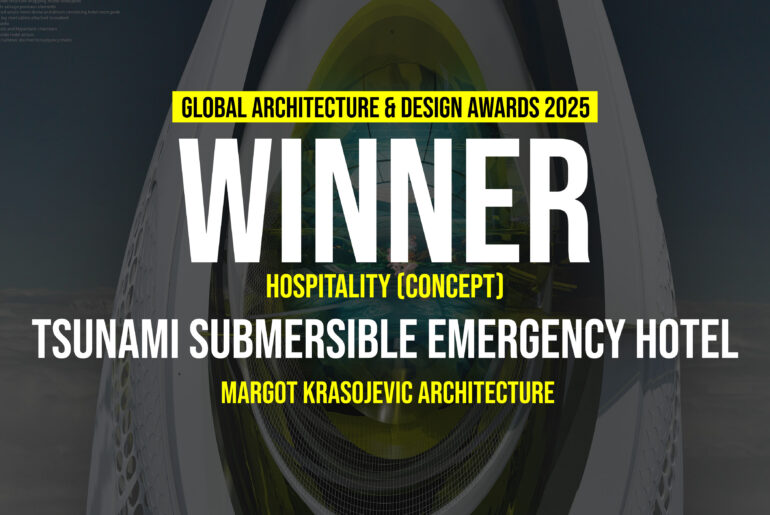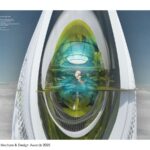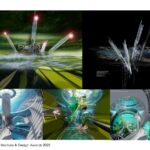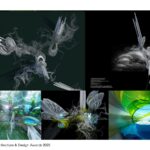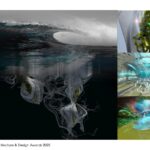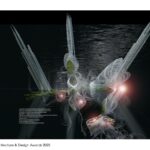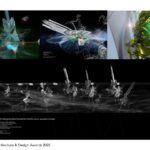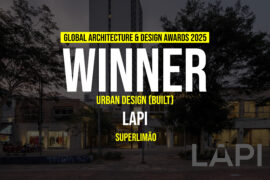The hotel’s vertical structures can submerge into the depths of the Pacific Ocean to avoid the impact of a tsunami. The design draws inspiration from floating pontoons, buoys, sleeping humpback whales, and submersible vessels, as well as vertically moored tension leg oil rig platforms.
Global Design & Architecture Design Awards 2025
First Award | Hospitality (Concept)
Project Name:Tsunami submersible emergency hotel
Category: Hospitality (Concept)
Studio Name:Margot Krasojević Architecture
Design Team:Margot Krasojević
Area:
Year:2025
Location: Pacific Ocean, China
Consultants: Tim Macfarlane engineers
Photography Credits:Margot Krasojević
Render Credits:Margot Krasojević
Other Credits:
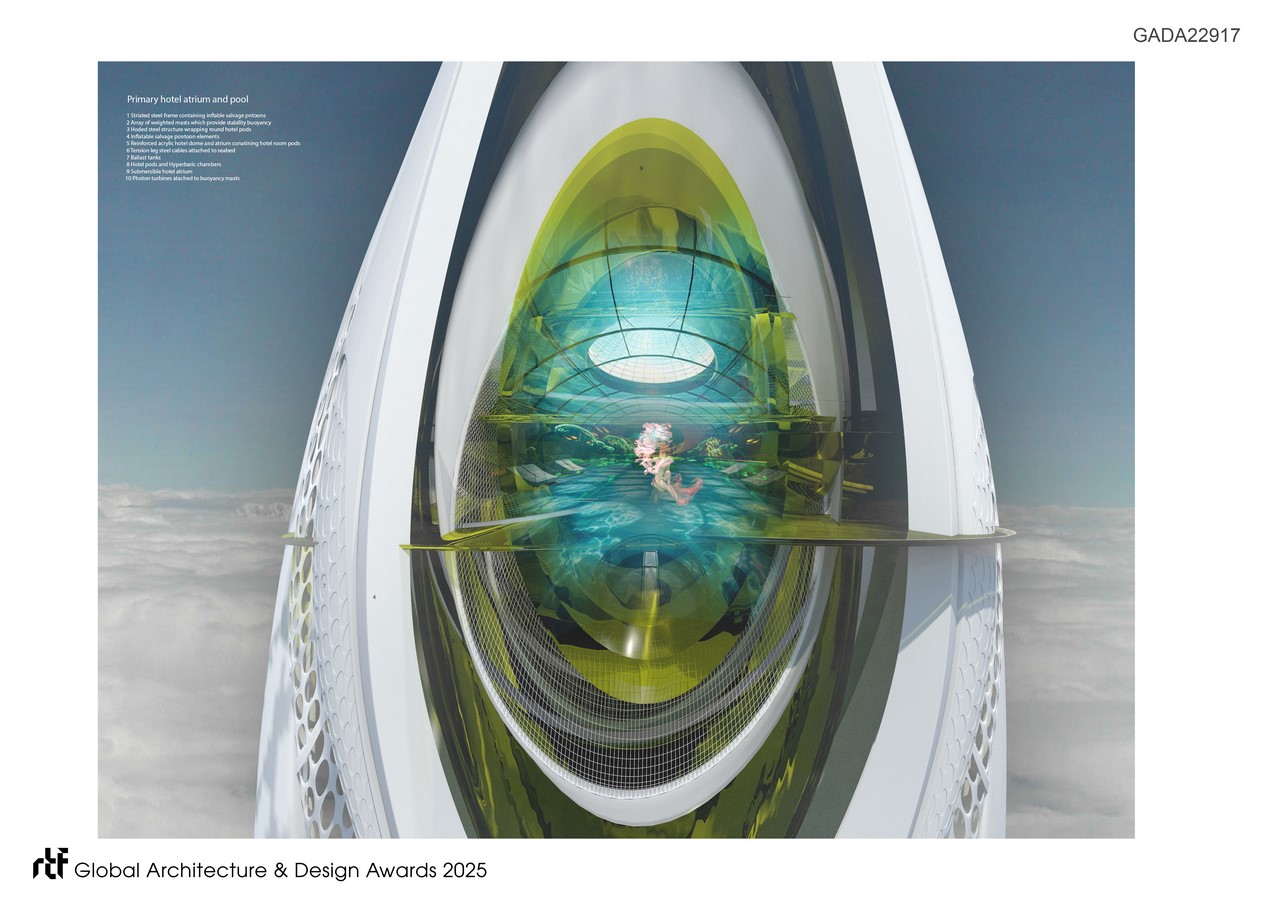
Tourism has long been associated with adventure and sustainable environments, offering the experience of something new and unexplored. This hotel caters to people who wish to break new ground and experience challenging climates.
One of the focal points of the design is the inflatable facades, which act like life jackets; pockets of marine salvage inflatables expand as necessary to maintain floating stability and prevent further tilt and aid with resurfacing of the submerged hotels once the tsunami has passed. The main structure consists of a series of reinforced acrylic inhabitable pods protected by this facade. The three hotel structures are tethered to the seabed using motors to retract the structures below the water, which involves deflating the inflatable facade jackets. Other pockets contain ballast tanks, which flood, similar to a submarine, to lower the hotel into the ocean. Each room contains a hyperbaric chamber, which allows for pressure change in the environment.
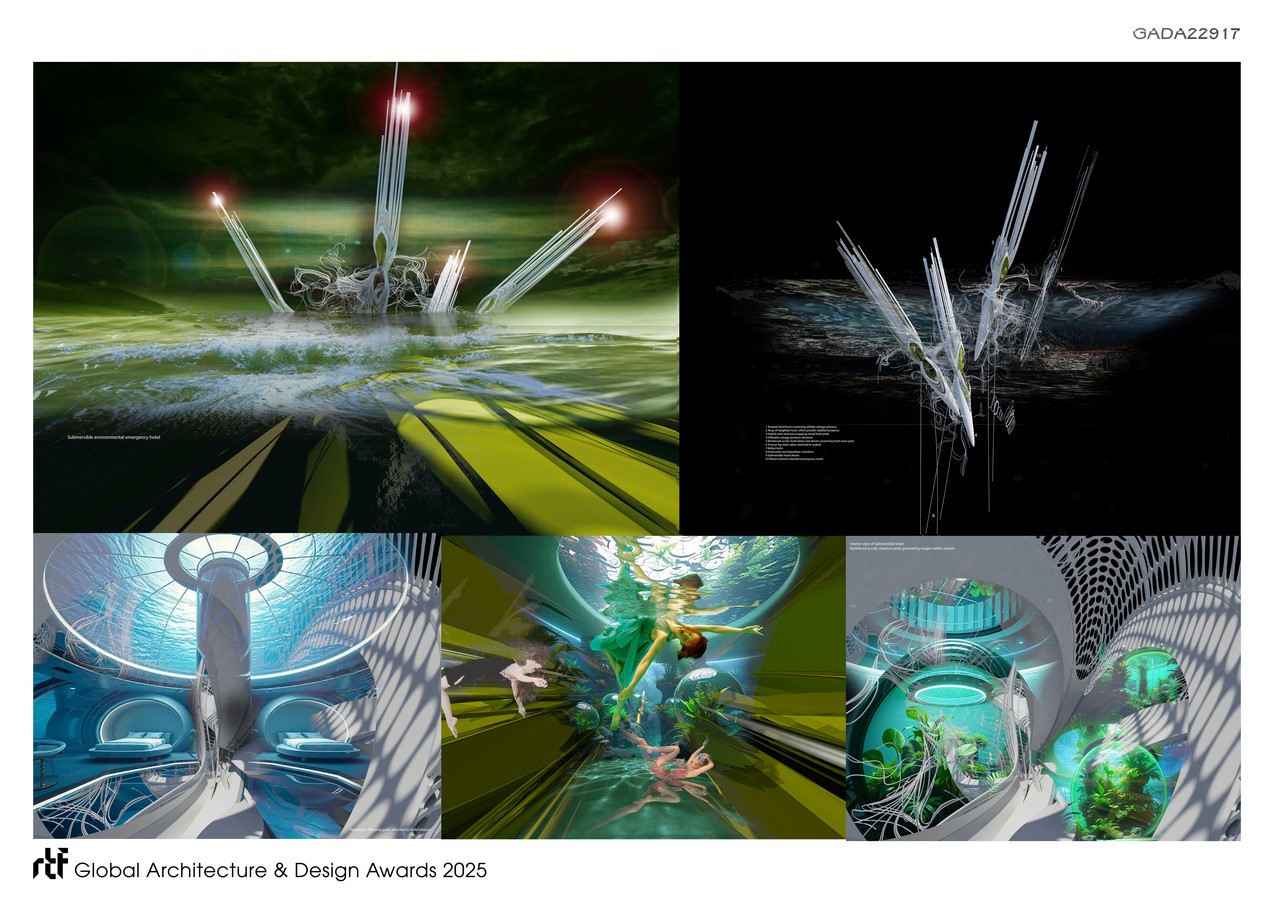
All three hotel structures are equipped with an array of masts that support a series of photonic turbines. These advanced wind turbines leverage photonics technology to deliver unmatched performance and efficiency. By incorporating light-based, fiber-optic sensors, they continuously monitor blade strain, temperature, and vibrations.
Similar to giant squid, they help keep the hotel from tipping over by balancing the structures far enough apart to prevent them from crashing or distorting the buoyancy.
The typology is not solely for hotel use, but also provides a versatile structure for various purposes and operations
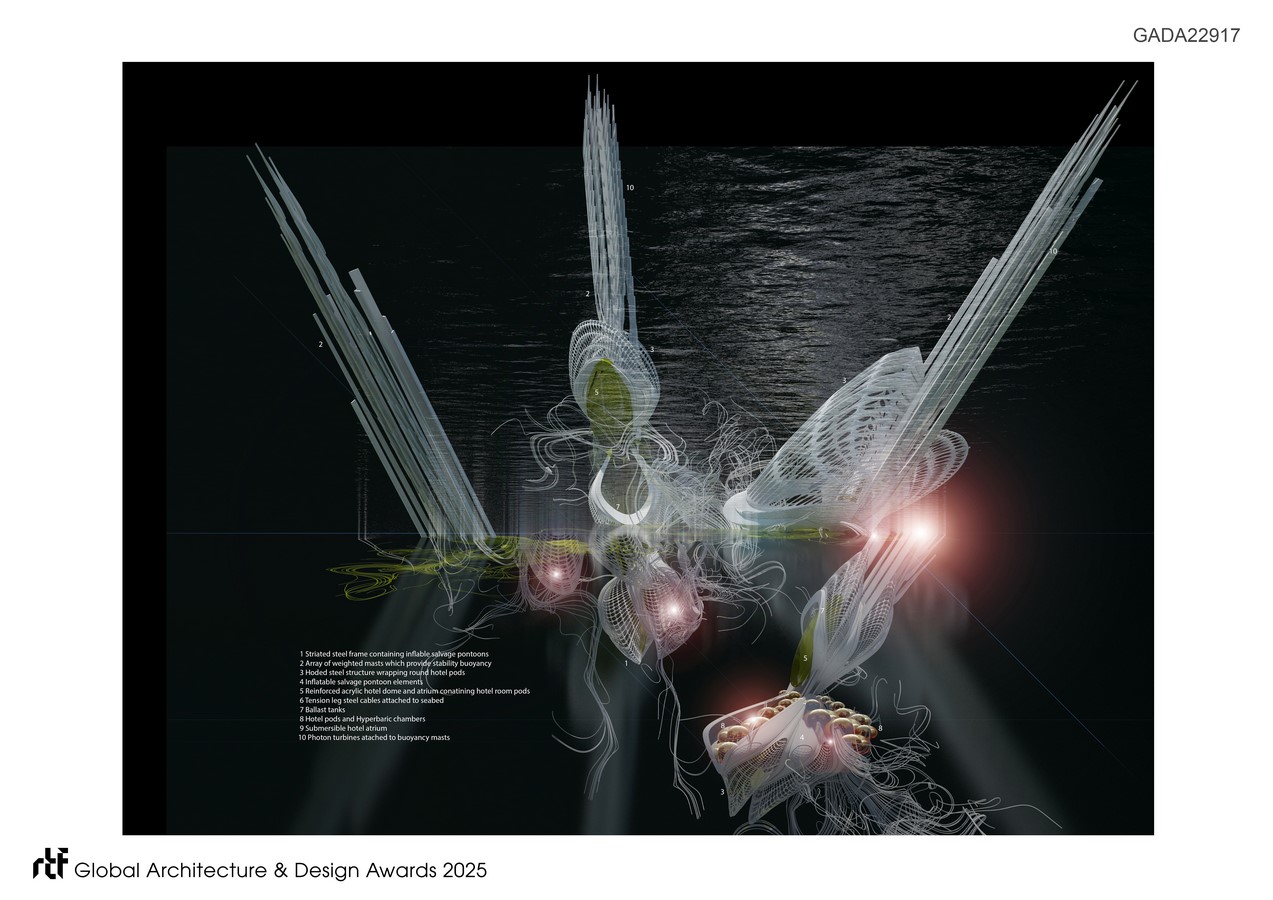
Visitors can reach the hotel by boat or helicopter, as it is located in the Pacific Ocean, fifty miles from Taiwan and 150 miles from China’s Eastern volcanic arc mainland. The inhabitable structure is modelled on a float design to enhance stability; the facade wraps a series of vertical elements that contain floating devices for the structure, helping to maintain equilibrium as a floating hotel. The hotel is anchored to the ocean bed and can be lowered as necessary, similar to a tension-leg oil rig platform.
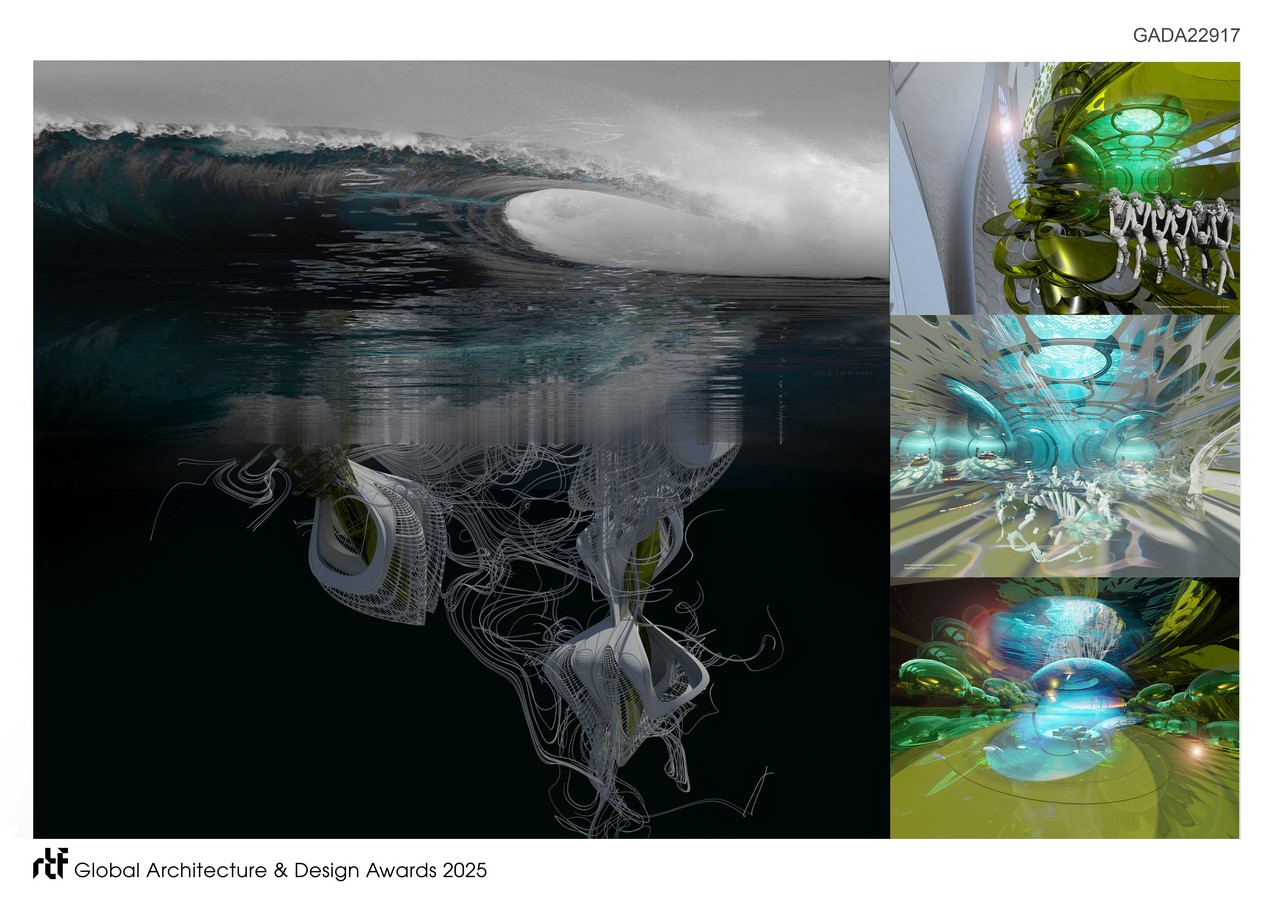
The hotel’s location when submerged in deep water, and miles from China’s eastern coastline, means that a tsunami will have a smaller wave height, and the wave motion is not as dangerous; the pressure and movement are withstood by submersibles, making it safer than being located closer to the coast, whereby the wave amplitude has drastically increased and slowed down growing to a destructive level.
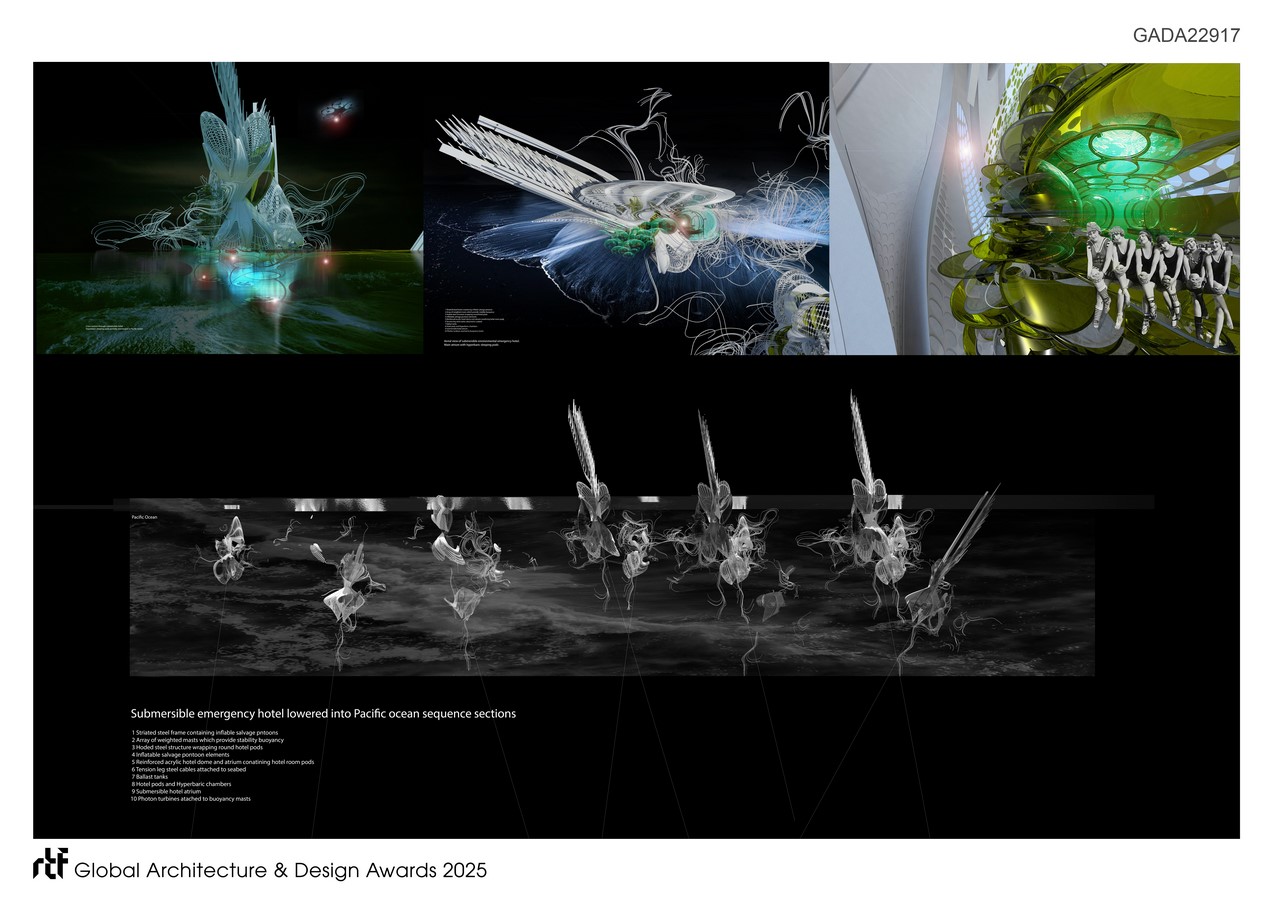
With hyper-tourism and over-tourism being a primary environmental, social, and political concern, this hotel aims to mitigate the destruction of coastal resorts by offering a lesser-known destination for exploration, thereby encouraging travel to help alleviate over-tourism.

